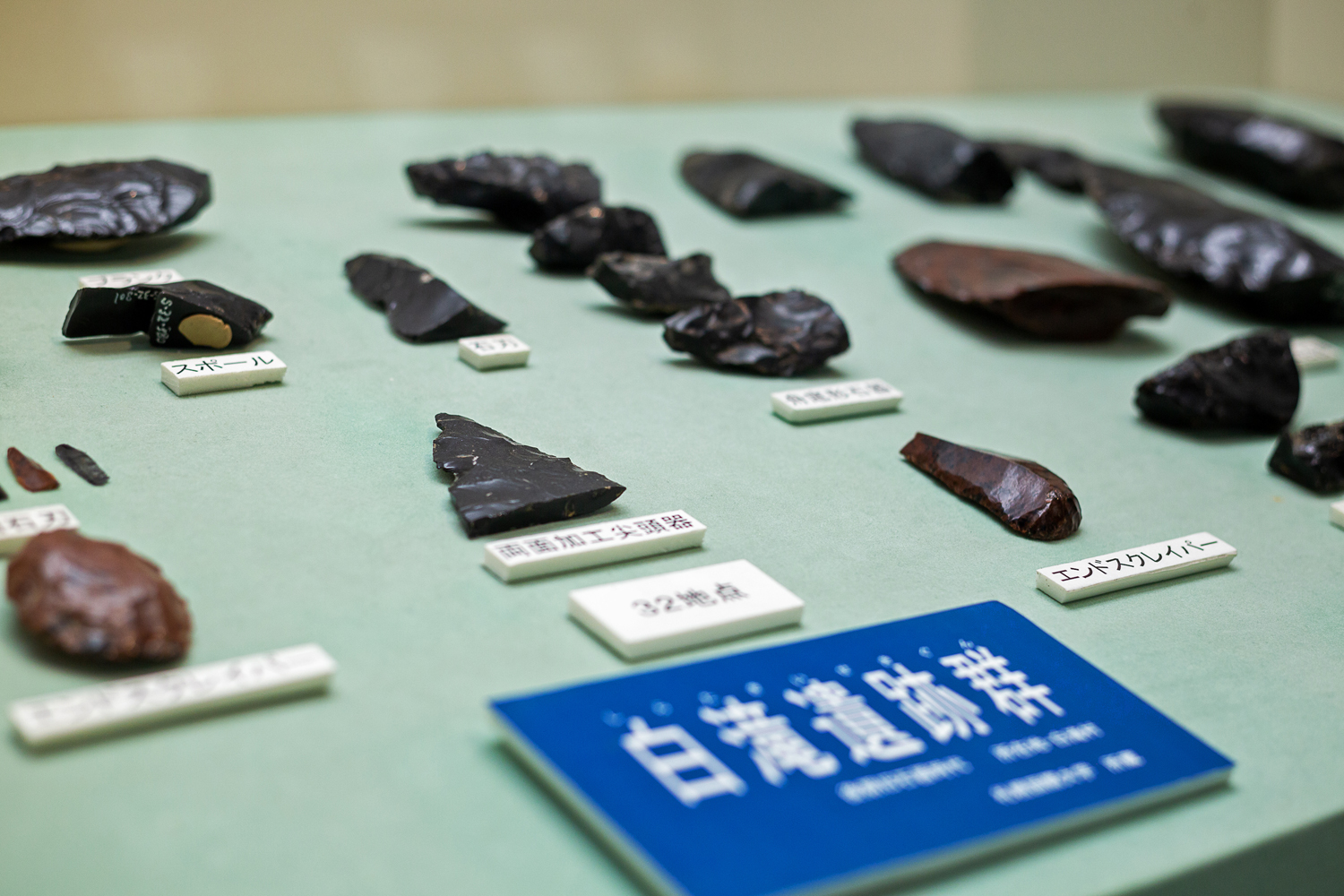
An exhibition of the Shirataki Sites Collection

An exhibition of the Shirataki Sites Collection
In November 2022, obsidian from the Shirataki Sites in Hokkaido was designated a national treasure. The designated artifacts from these Paleolithic sites located in northern Hokkaido are on display at the Engaru Archaeological Center, but stone tools from the same Shirataki sites can also be seen at the Sapporo International University Museum, which is located far from the sites.
“These are similar items to the Shirataki Sites’ national treasure,” says senior, Sawada Yui, pointing to a display case. The collection is that of archaeologist Yoshizaki Shoichi, who was once a professor at the university, and some of the materials he personally excavated and collected from the Shirataki sites are on display. Yoshizaki is known for his advocacy of the ‘Yubetsu technique,’ a method of stripping obsidian peculiar to northern regions to make fine stone blades (small stone blades embedded in wood or bone).
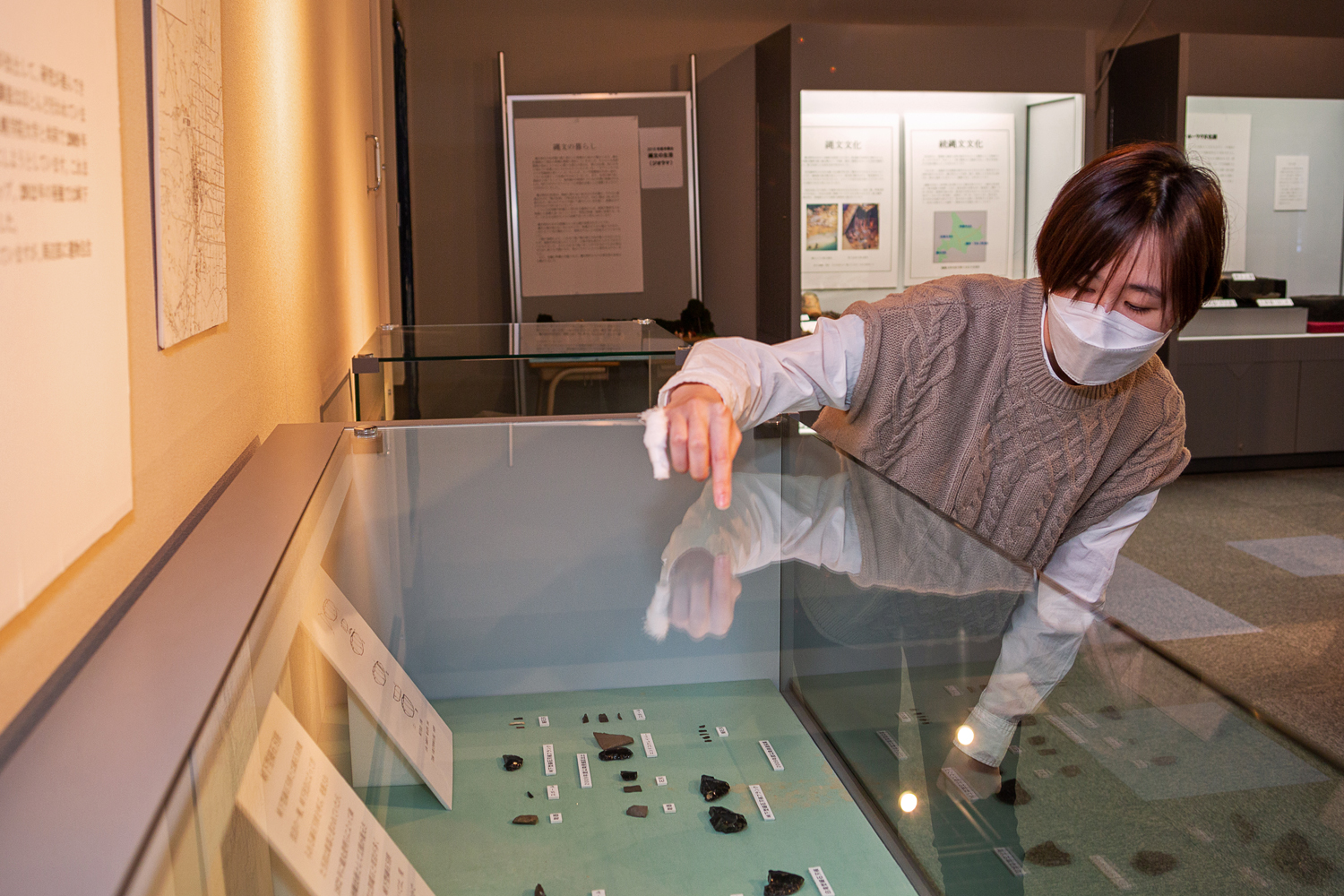
Sawada Yui is a senior in the Faculty of Humanities. She has been aiming to become a curator since she was a high-school student.
Meanwhile, stone tools made from shale as well as those made from obsidian are being unearthed at the Daikan Site in the town of Yakumo.
“They used both obsidian and shale,” explains Sawada.
In this way, students taking the museum training course take turns at being in charge of explanations and other museum duties. They prepare by practicing explanations in the spring semester, and then take on the responsibility of providing visitors with actual explanations in the autumn semester.
The museum has another exhibition room that houses the Hirano Collection, which is a collection of Ainu-culture-related materials. Hirano Toshi, grandfather of Junior College President Hirano Yoshiaki, was a collector of everyday Ainu implements. The materials he collected from the Meiji and Taisho eras were donated to the university, and the exhibition room opened in 2001 with the purpose of displaying them. The collection includes items that are rarely seen even in public museums and archives. For example, many Ainu cotton garments are remakes of Japanese kimonos, but there are no other examples of a garment made from a yukata that contains the star mark of Meiji era Sapporo Beer, making it extremely rare.

The Hirano Collection display
Regular students are not the only ones involved in the museum. Sapporo International University runs a program to offer university classes to members of the public, and some classes can be taken just like regular students(*Currently, only language courses are offered due to measures against the new coronavirus infection. Please inquire for details.) Some of the museum-related lectures are also available, and some have even attained curatorial certificates.
What is the significance of local residents being involved in the museums, other than for the purpose of lifelong learning and gaining qualifications? Professor Koshida Kenichiro, who directs the museum training, incorporates the concept of cultural resources, saying, “The materials in the museum are not the only cultural assets. There are things in our daily lives that are important to each of us, but their importance is not conveyed to the public. Not only the big history, but also the small, personal history can become culture. In order to pass it on to the local community and future generations, it is necessary to be able to look at it as a cultural resource and utilize it. It is meaningful for not only students but also local people to learn about the roles of museum, and to pass on culture in a new way from the perspective of cultural resources.”
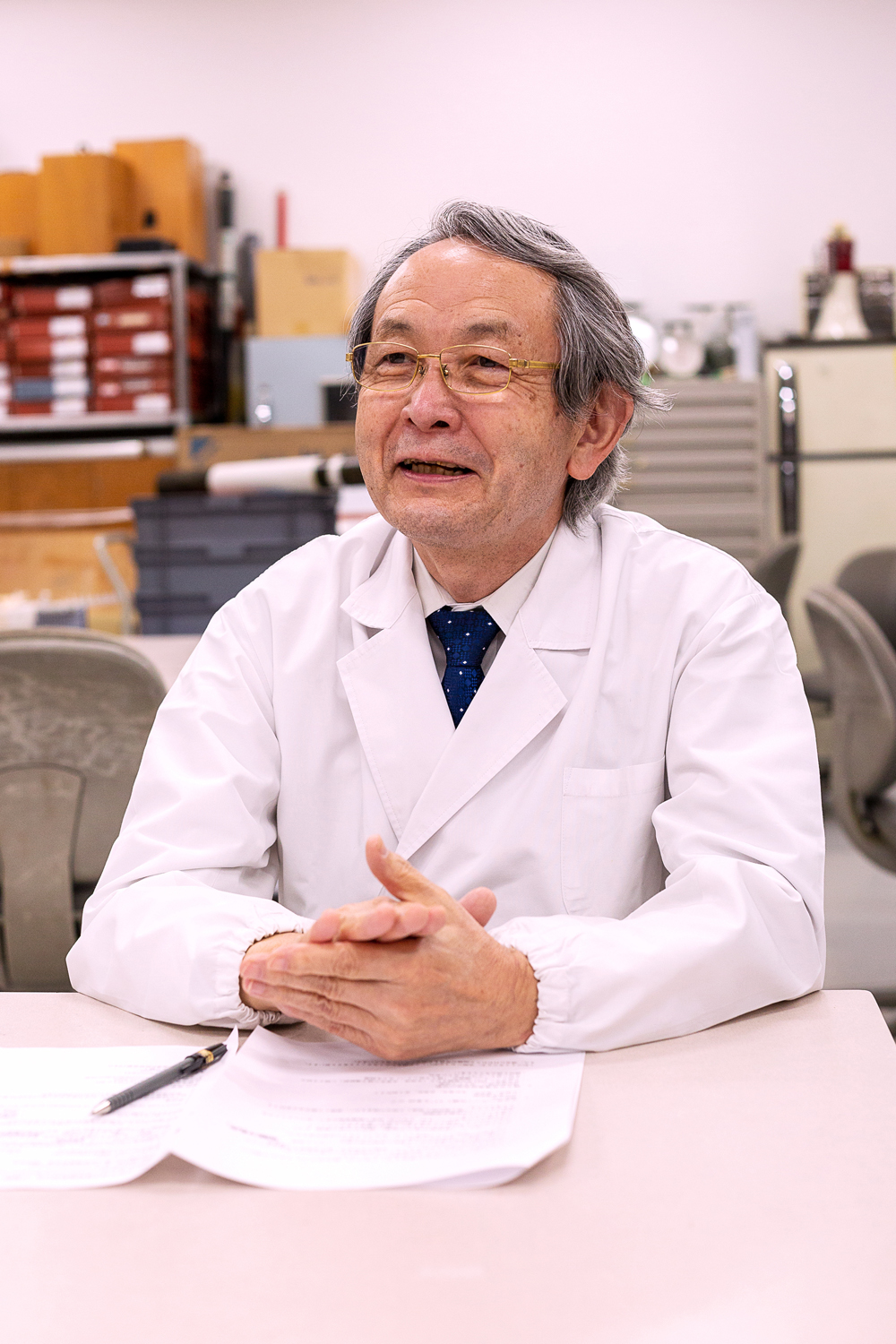
Professor Koshida Kenichiro, Department of Contemporary Culture, Faculty of Humanities
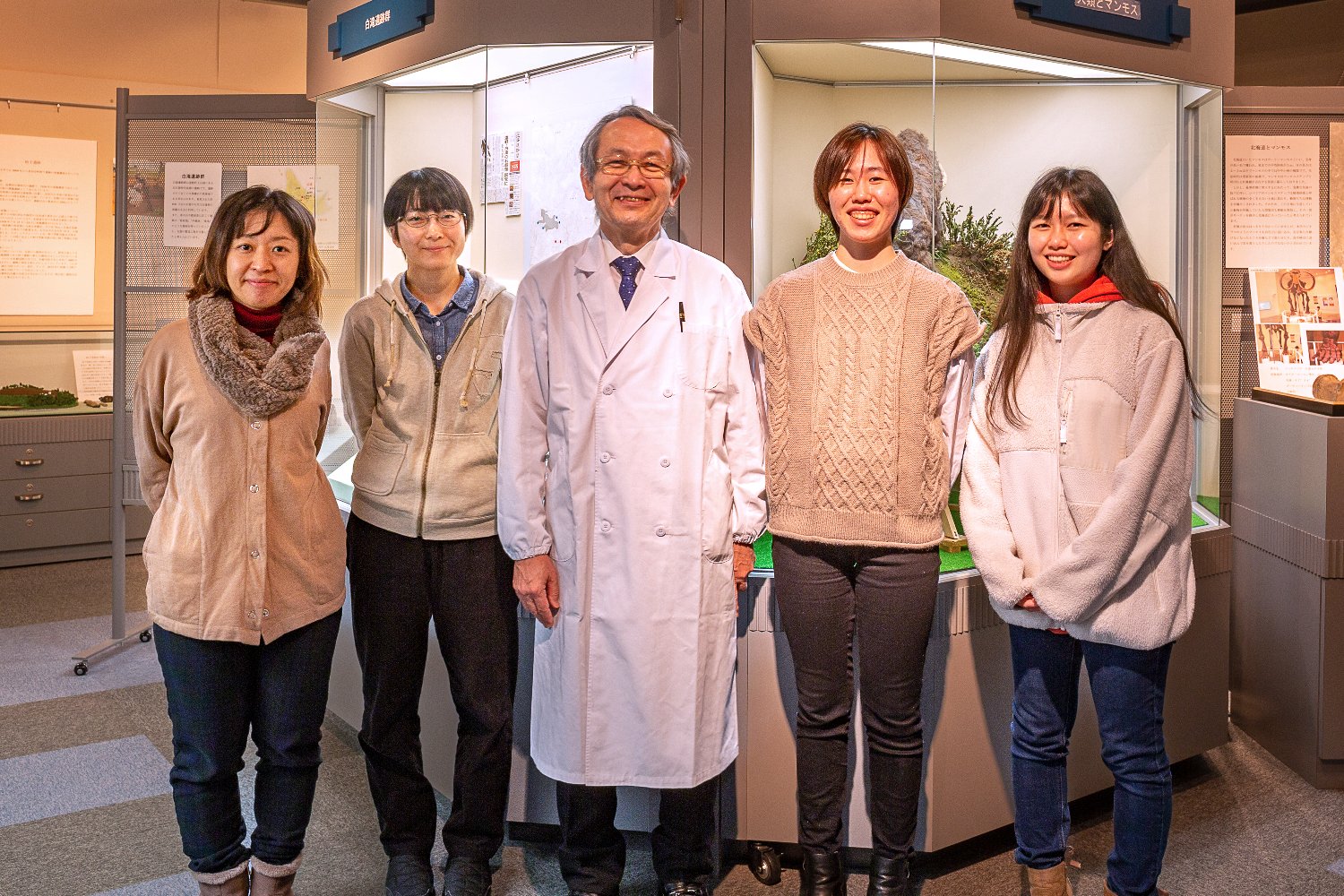
Professor Koshida (center) and students on the ‘practical museum training’ course. From the right, Faculty of Humanities senior Fujii Kazuki; Sawada, who is responsible for explanations; alumna and Jomon World Heritage Research Laboratory employee Watai Hitomi; and company-employee student Zako Mika
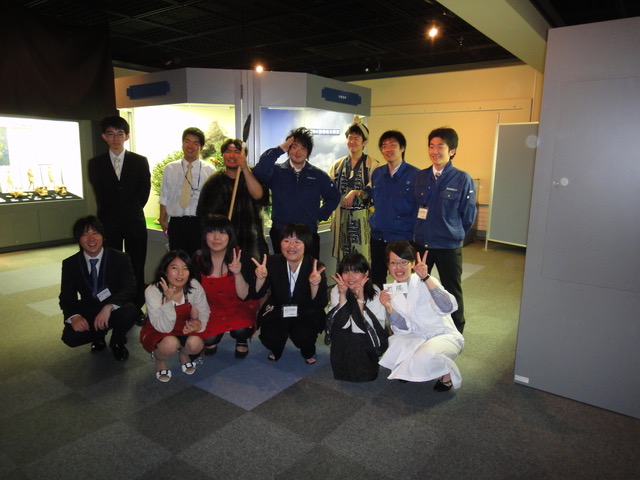
2010年度の企画展「ナイトミュージアム」では、学生が縄文人などに扮して展示室に出没し、来館者を楽しませた (写真提供:札幌国際大学博物館)
*Students’ academic years are as of December 2022
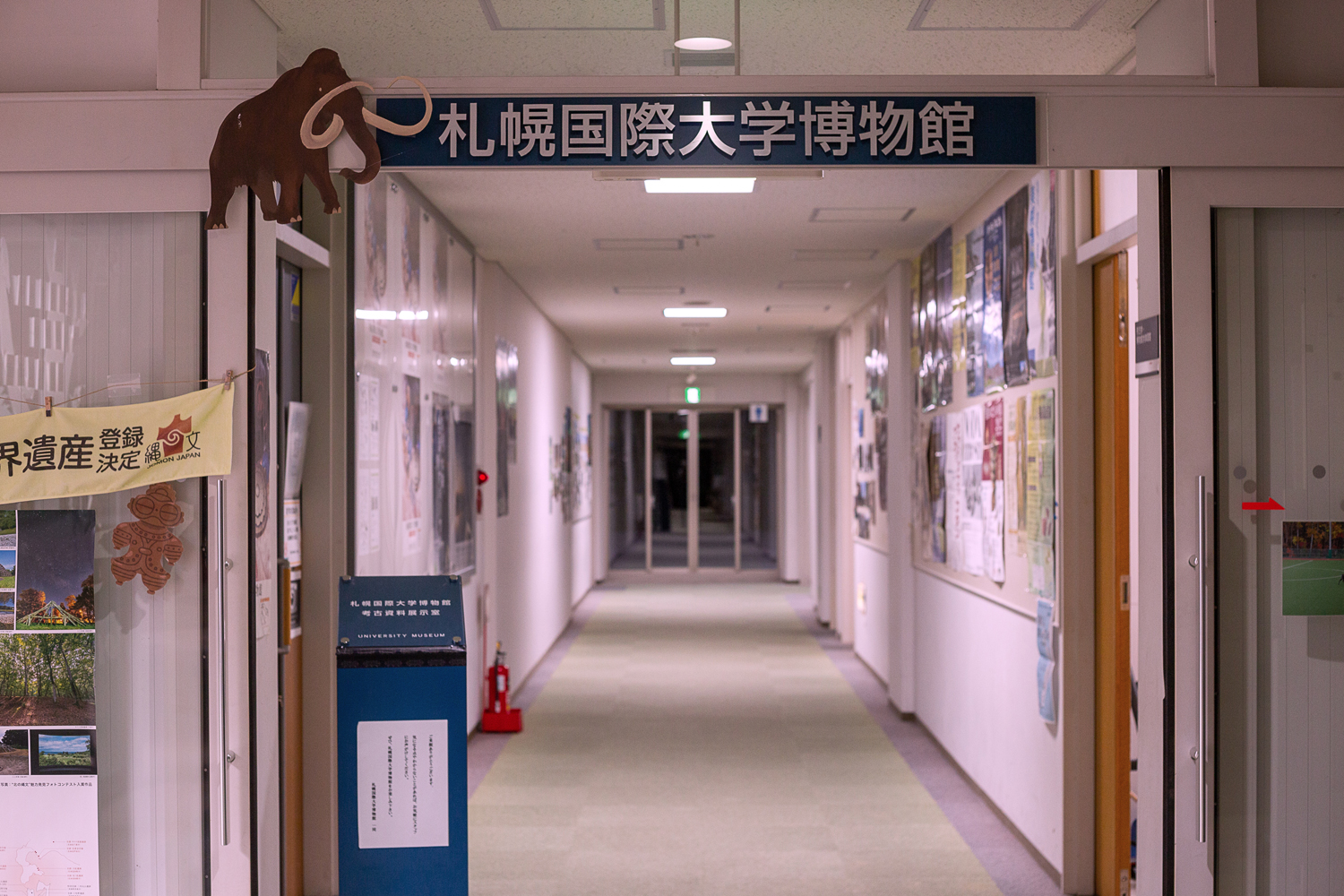
The museum comprises an archaeological materials exhibition room and an Ainu culture exhibition room
Sapporo International University Museum 
1F, Sapporo International University Bldg. 6
Kiyota 4-jo 1-chome 4-1, Kiyota-ku, Sapporo, Hokkaido, Japan
Tel.: 011-881-8844 (switchboard)
Opening times: 10:00–17:30 Mon. to Fri., 10:00–13:00 Sat. Closed on Sun. and public holidays
Opening days: Open on the same days as the first and second semester class periods. *Please inquire with regard to opening days. Tours are available on request with advance notice.
Admission: free